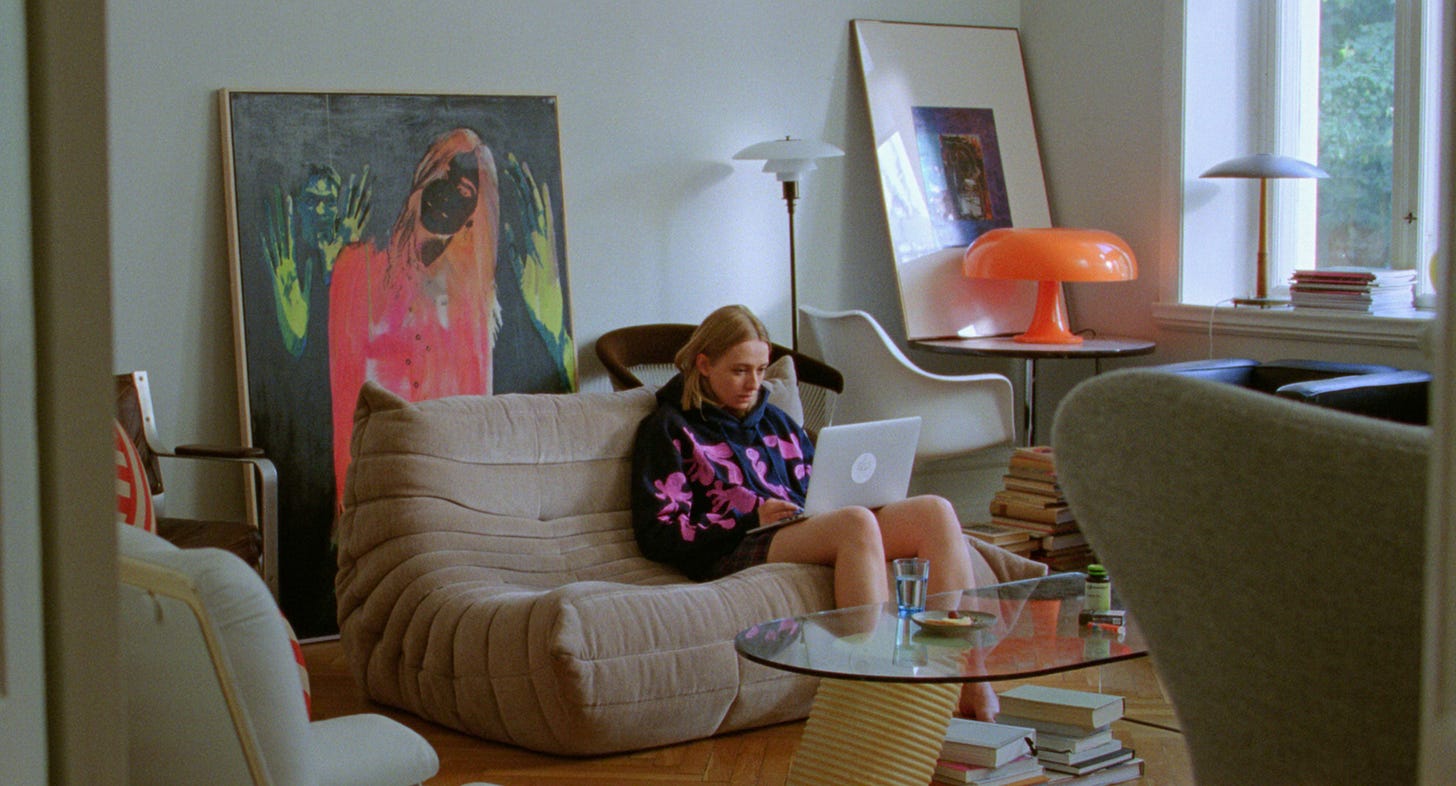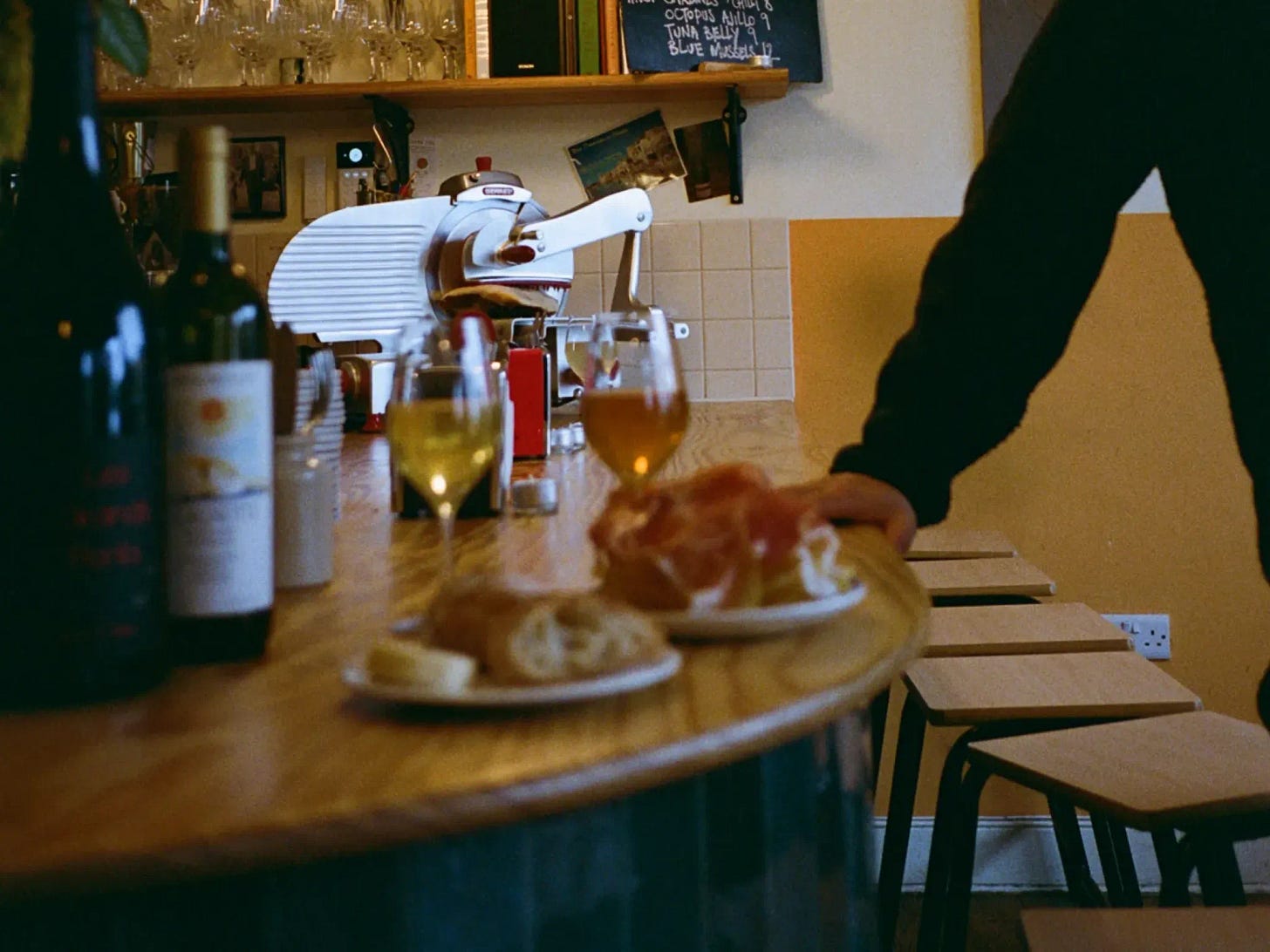Character #2: The Branded Couple (Part II)
The curated lifestyle is coming undone.
Welcome back to The Branded Couple. You can read Part I here.
In Part II, we break down the Character’s four tropes and predict where they’re going next. Let’s jump straight in.
Trope 1: The Aesthetic Arrangement
We all know a couple that’s too beautiful for its own good. For me, Don and Betty Draper are exactly that. This is one of the things I like most about Mad Men, my favourite tv show of all time. Not their beauty itself, but because their beauty is there for a reason. The show doesn’t pretend not to notice it, but pivots around it.
From their red-doored house in the commuter town on the Hudson River, to the dimpled boy-girl kids, to their jobs – Betty: model turned housewife; Don: salesman turned adman – The Drapers are the perfect post-war couple. Neighbours talk about them. Co-workers ogle at them. Strangers are jealous of them. They are, in many ways, the epitome of The Joneses.
We never see the origin of Don and Betty’s relationship, but, as viewers, we recognise its hollow façade. I get the impression they didn’t so much marry each other as the idea of what they make together, that picture-perfect image of The Drapers.
Don needs a beautiful wife to complete the picture he’s painting (if you don’t know what I’m talking about, watch season one), and Betty needs a high-powered husband to complete hers. They’re different pictures, but they look the same: green lawns, roast beef, a barking dog. There’s a strategy to their coupledom, and one that I suspect is more common than we think.
As much as I disliked Celine Song’s Materialists, I’m glad it’s got us talking about marriage as an economic arrangement again. But I’d go even further and say that marriage is, for many people, an Aesthetic Arrangement.
I see mirrors of Don and Betty today, made possible by dating apps and how they’ve supplied us with PDFs of our potential partners. And for a while, these PDFs worked – around 16% of couples met their partners online.
In my friend Rafa’s review of Materialists – and meditation on the depressing state of romance today – she cites a stat from Experian: 63% of 18–35-year-olds believe social media has influenced people to date for money and materialistic reasons over love. If you think this means young people are pairing up for pragmatic reasons, then consider that 43% think they’ll end up in a picture-perfect relationship, according to Match.com. Even with our realist hats on, we’re still expecting perfection.
‘My mother always said: you’re painting a masterpiece, make sure to hide the brushstrokes.’
– Betty Draper, Mad Men
Let’s take a closer look at Betty, who’s shaped herself into the Perfect Housewife. As a result she’s constantly over-dressing, role-playing, and worrying what her neighbours are thinking. She lives in a state of social comparison, because what else is there to do? Betty did everything she was told to, and, on paper, she has exactly what she wanted. But there’s one problem – she isn’t happy.
For a lazier show, this would be Betty’s season-long narrative arc. But not in Mad Men. That’s where the series begins for Betty; with the perfect life already attained. What happens when you already have everything you want, when you have curated your life until it looks like a toothpaste commercial; what happens when you look around and realise you don’t like it? What happens then?
Trope 2: Domesticity and its Discontents
I was nervous about reading Perfection. As a freelance creative-something who travels with my laptop more than another person, I already had my guard up, ready to protect my life choices from being torn to shreds.
Perfection is about an expat couple living in Berlin. It’s a satire of Millennial culture and the liberal gentrifiers who are subscribing to a lifestyle that is absolutely, definitely much less normative than the one that people in their hometown are living. Or so they keep telling themselves.
I had mixed feelings about the book’s publisher, Fitzcarraldo, otherwise known as the little blue books (sometimes they’re white, if they’re feeling crazy). I worried that the sameness of the covers was stripping authors’ identities. And not only that: the books were becoming a symbol for somebody who thinks. They were not-like-other-books. The Pick-Me Girl of the publishing industry.
But after reading Perfection, which I liked more than I expected, my opinion of Fitzcarraldo changed too. I realised: it’s in the joke. It knows it’s contributing to a homogenous mass of ‘good taste’ and aesthetic intellectualism. And Vincenzo Latronico, Perfection’s Italian author, knows too:
GQ interviewer: When, and why, did you move to Berlin?
Vincenzo Latronico: In 2009, out of conformism – because it was cool and cheap.
I laughed at this. It made me like Vincenzo. I wish more of us could be so honest about why we do things.
In fact, I laughed a lot while reading Perfection. It isn’t a funny book; I actually think it’d have benefited from a more cutting satire, rather than its sympathetic one. But I laughed at the names of its protagonists: Anna and Tom. I laughed again at the description of a design job that consists of ‘making tiny tweaks to existing frameworks’. And I laughed even more when they don’t go to a protest because it’s in another neighbourhood and, oh wait, they have a client call anyway.
Like the Fitzcarraldo books, the couple has no individual markers. They do everything they’re supposed to: they freelance as graphic designers. They have an ever-changing cast of friends from every European country except Germany. They go to Berghain and consider polyamory. They eat takeaway pho at their desk, and later get really into home fermentation and tahini.
The novel is repetitive and generic, but it’s supposed to be. It was the curated claustrophobia of the domestic scenes that stuck the most with me: the Danish armchairs, old copies of Monocle, white enamel plates with blue rims, the plants.
This isn’t the first time I’ve been perplexed by the Branded Couple’s attachment to the domestic. Shouldn’t people who choose to live in a big city be out and about? Why are they so homely? Why are they so trad?
London readers will be familiar with Real Housewives of Clapton, a meme account that laughs both at and with the creative class of East London. It has a quarter of a million followers, because when people are triggered, they hit follow.
These days, the account acts as moodboard of the 30-something experience, and it doesn’t look how you’d expect. Staying home to cuddle underneath an Arket blanket, sipping from a Yogi Tea and putting a big stew on at 4pm is much cooler than going to a party in 2025. I know the housewives reference is a joke, but it’s kind of spot on.
But why is the home so romantic to the Branded Couple? Is it because we’re in a housing crisis? Or have we just grown up? In Perfection, Latronico makes the case for the tangibility of the home and its material objects in a life that is so immaterial:
‘The environment where Anna and Tom slept and worked, and which they themselves had chosen and shaped, was the one tangible manifestation of who they were. That apartment and those objects provided a foothold, proof of a grounded lifestyle, which, from another perspective (that of, say, their parents’ generation) appeared loose.’
So, that’s it: the branded apartment is proof of a life that, by historical standards, is about to float away. People are in corporate-creative jobs they can’t define, they can’t commit to marriage, aren’t sure if they want kids, they have no deep ties to community, few values to speak of. They live in a bubble of nice things and good hand soap. They look in windows a lot: at themselves, at other people.
Trope 3: The Couple-as-Brand
There was a point when, during the pandemic, I was following a number of couples who acted like a ‘brand’. They weren’t trad wives exactly – I’ve always engaged with them from afar – but these couples were closer to my actual life, which makes my relationship with them veer into parasocial territory.
As time went on, I began unhooking myself from them. Either I stopped caring, or they had kids. When I went looking for them again, I discovered that, like reality stars whose dramas we were once so invested in, I’d forgotten their names. In fact, the only couple I could remember were Anna Shaffer and Jimmy Stephenson, and that’s because they run Hector’s, a wine bar in East London’s De Beauvoir.
I’m not going to spend too long on Hector’s, because I do go there, even if I leave with a mental checklist of how I can get 50% hotter, a stomach ache from eating cheese and anchovies for dinner, and £37 less in my bank account. But I also have a strange connection to the wife, Anna.
When I was about 16, I had a brief stint as an extra on the soap opera Hollyoaks. It only happened a few times, when my dad agreed to drive me to Liverpool at 5am, but it was exciting. I wore my hair big and curly, which I thought would work in my favour – I’d stand out in the busy school scenes, and someone would scout me for a lead role!
In the end, I was asked to step out, because one of the actual leads, Ruby, the bad girl at school, had big curly hair, and two girls with curly hair was too confusing, they decided. Ruby was played by Anna Shaffer.
It was a weird coincidence, but it drew me closer to Anna and her husband Jimmy, a classic wine boy and Branded Couple hubby – otherwise known as a Norman.
By no means are they the only couple to turn their creative vision into a brand. Another Creative Power Couple I’ve been thinking about are Mette and Rolf, who co-own the Danish homeware company Hay. If you don’t know Hay, you probably do. It’s been quietly pervasive for the last few years, responsible for adding flashes of colour to a Millennial interior that was once white and grey and pastel pink.
I always thought of Hay as the North Star of my Branded Couple thesis – how it’s bright but bland, colourful but samey, quirky but extremely easy to copy (as H&M knows). I had no idea it was actually owned by a husband and wife, much less ones that looked like an AI-generated Branded Couple.
Suddenly it all made sense. Hay was not just selling yellow storage crates and green sofas and blue tote bags, but an entire world. A world where everything is comfortable and cosy; a world where the only pain and difficulty comes from spats that are settled by a nice dinner; a world where all you need is a partner and dog and apartment and enough money to buy branded candlesticks, and voila – you can have It All.
Cue the ennui. Like Perfection’s Tom and Anna, who flee Berlin for Lisbon and Sicily, many couples are seeking fulfilment in new places with warmer climates and lesser-trodden paths. The Hays recently left Copenhagen for Italy, where they joined forces with another Danish couple. Together, the ‘arbiters of contemporary cool’ (the FT’s words, not mine) bought and restored Villa Colucci, a 19th-century palazzo in Puglia.
I expected the palazzo to look like a White Lotus version of a Hay store, and in a way it does, but the Hays have moved away from the Danish aesthetic, or at least blended it with an Italian one. It’s a little culturally schizophrenic, but, well, I’d stay there.
The crossover of the Digital Nomad and Branded Couple is not unexpected. They’re both blamed for flattening a place’s culture, for living in a bubble that isolates them from their surroundings. I wonder what will come next. Whether the disintegration of Tom and Anna’s urban exodus is a dream sequence, or a cautionary tale.
Trope 4: The Decoupling
Although it could be considered dehumanising to treat couples as a unit, rather than two individuals, it makes for interesting new ground for storytelling. Once, stories revolved about one complex hero, someone like The Diarist, but now we’re seeing couples move from NPCs to main characters. This opens opportunities for stories that aren’t romcoms or marital dramas, but explore relationships as stand-ins for fulfilment.
Or a lack of it. One film exploring the demise of the Branded Couple is Sick of Myself, a brilliantly original film by Norwegian director Kristoffer Borgli. It revolves around Signe and Thomas (yes, another Tom), who look like the coolest couple you know. They wear crisp unisex shirts and collect art. In fact, they’re both artists, only Thomas is more successful, and Signe is jealous.
The film descends into dark places, as Signe is driven to extreme measures by her desire to be seen. Because the film is set in Scandinavia, it deals with the Law of Jante – a mostly unspoken social code that warns against standing out. According to some friends in Copenhagen, this mindset continues to breed fear around expressing individuality, which is why so many people, and the things they buy, look the same.
But this fight for independence doesn’t mean the end of the Branded Couple. It’s a natural reaction to building a life as a unit. We want partnership until we want individuality; to stay inside until we want to go out; we buy things until we throw them out and want other things.
I expect their setting will shift too. Once products of the suburbs, then the city, they are now right at the city’s edge, years or months from being priced out altogether. They’re quitting their jobs, liquidating businesses, looking up houses in Tuscany or Cornwall or the Aegean, moving home, breaking up, looking for something else, looking for… something. They aren’t sure what yet, but then, who is?
Thanks for reading.











Woooow best one yet. Will be picking up Perfection, it sounds like such a good bit of observation haha